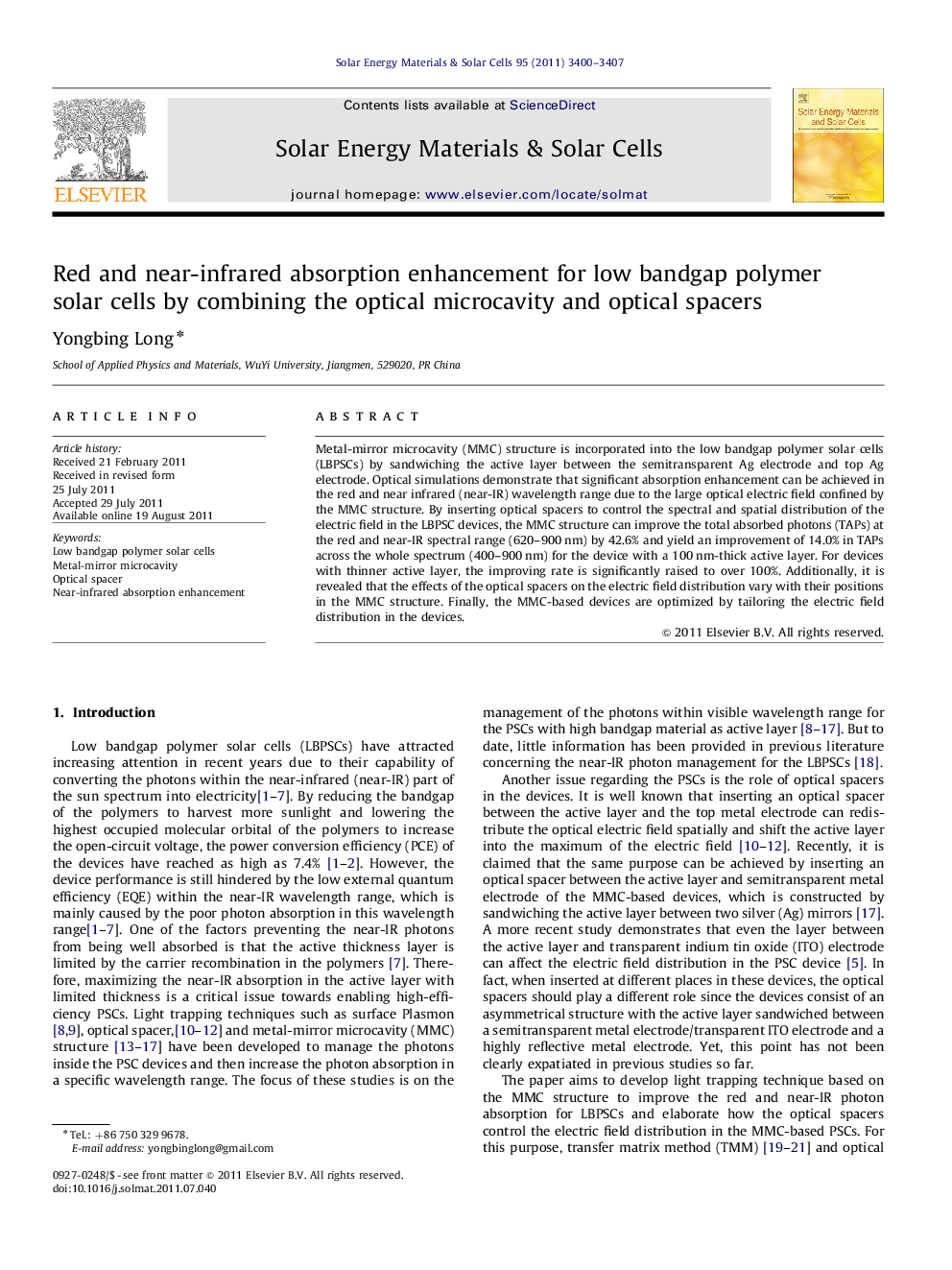| Article ID | Journal | Published Year | Pages | File Type |
|---|---|---|---|---|
| 79643 | Solar Energy Materials and Solar Cells | 2011 | 8 Pages |
Metal-mirror microcavity (MMC) structure is incorporated into the low bandgap polymer solar cells (LBPSCs) by sandwiching the active layer between the semitransparent Ag electrode and top Ag electrode. Optical simulations demonstrate that significant absorption enhancement can be achieved in the red and near infrared (near-IR) wavelength range due to the large optical electric field confined by the MMC structure. By inserting optical spacers to control the spectral and spatial distribution of the electric field in the LBPSC devices, the MMC structure can improve the total absorbed photons (TAPs) at the red and near-IR spectral range (620–900 nm) by 42.6% and yield an improvement of 14.0% in TAPs across the whole spectrum (400–900 nm) for the device with a 100 nm-thick active layer. For devices with thinner active layer, the improving rate is significantly raised to over 100%. Additionally, it is revealed that the effects of the optical spacers on the electric field distribution vary with their positions in the MMC structure. Finally, the MMC-based devices are optimized by tailoring the electric field distribution in the devices.
Graphical abstractFigure optionsDownload full-size imageDownload as PowerPoint slideHighlights► Low bandgap polymer solar cell with metal-mirror microcavity (MMC) is investigated. ►MMC structure can improve the red and near-infrared absorption by over 42.6%. ►Optical spacers can redistribute the electric field spectrally and spatially. ►Effects of spacers on electric field distribution vary with their positions in MMC. ►Optical performance is optimized by managing the electric distribution in the device.
